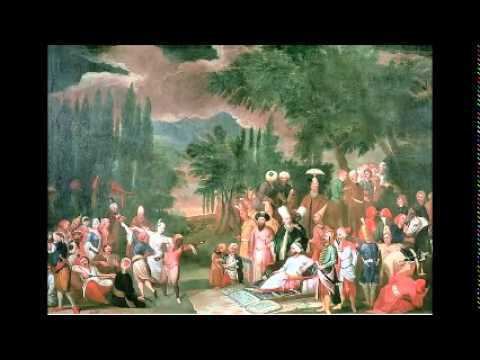 | ||
Who are the xueyantuo
The Xueyantuo (薛延陀) (Seyanto, Se-yanto, Se-Yanto) or Syr-Tardush were an ancient Tiele Turkic people and Turkic khanate in central/northern Asia who were at one point vassals of the Gokturks, later aligning with China's Tang Dynasty against the Eastern Gokturks. Xueyantuo started from Selenga River/Xueyanhe River (薛延河江/偰輦河江), so tribe name is Seyanto/Xueyantuo (薛延陀), Chinese Han character undergo considerable revision by rise and fall of Chinese Dynasty, so have many name as Xueyantuo, Xueyanhe, Xienianhe, Seyanto, Selenga, Selyanha, etc.
Contents
Xueyantuo
History
Initially the Xue and the Yantuo were two separate tribes. The Xue appeared earlier as Xinli but were not referred to again until the 7th century. After Yishibo, the Xueyantuo founded a short-lived Qaghanate over the steppe under Zhenzhu Khan, his son Duomi Khan and nephew Yitewushi Khan, the last of which eventually surrendered to the Chinese.
On March 27, 630, the Xueyantuo allied with the Chinese to defeat the Eastern Qaghanate in the Yin Mountains. Illig Qaghan escaped, but was handed over to the Chinese by his subordinate qaghan on May 2.
After Eastern Gokturk Illig Qaghan Ashina Duobi was defeated by Tang in 630, the Xueyantuo effectively took over control of the Eastern Gokturks former territory, at times submissive to Tang and at times warring with Tang and the subsequent khan of the Eastern Gokturks that Tang supported, the Qilibi Khan Ashina Simo.
In 632 they repulsed an army of Si Yabgu Qaghan from the Western Qaghanate, then subjugated the Qarluq at the Ulungur and Irtysh River, and the Yenisei Kyrgyz tribes. In 634 one of their rivals, Dubu Qaghan (Ashina Shier), son of Chuluo Khan, who ruled much of the eastern half of the Western Qaghanate, was eliminated before escaping to China.
After that they maintained a friendly relationship with the Chinese until 639, when a raid on the Chinese capital was planned by the Gökturks under Ashina Jiesheshuai (阿史那结社率), who had been disparaged by the Chinese emperor. He allied with his nephew Ashina Heluohu (阿史那贺逻鹘), choosing him as the leader of the raid on May 19. They were unsuccessful and over 40 rebels were executed. Heluohu was spared and expelled to the far south.
After this incident, an arraignment was made on August 13. A deportation of all Goktürks north of Ordos was carried out, in an attempt to restore the puppet Eastern Qaghanate as a barrier against the Xueyanto, to disperse their attention over the territorial competition in the west.
Among the Göktürk nobles, Ashina Simo was selected as the qaghan (Qilibi Khan) with his capital at the border. The plot failed, as he was unable to gather his people, many of his tribesmen having escaped to the south by 644 after a series of unsuccessful incursions by the Xueyantuo supported by the Chinese. Those defeats by the advancing Chinese had made their tribal allies lose confidence in them. The crisis deepened the next year when a coup d'état took place within the clan.
On August 1, 646, they were defeated by the Uyghur (Huihu, 回纥) and the Chinese. The Xueyantuo's Duomi Khan, Bazhuo, was killed by the Uyghur. A Tang army led by the general Li Daozong, the Prince of Jiangxia crushed the Xueyantuo forces. The last Xueyantuo khan, the Yitewushi Khan Duomozhi, surrendered. For a (disputed) relationship with the later Shato Turks, see Shato. Their remnants were destroyed two years later, on September 15.
Khans of Xueyantuo
Surname of Khans
The surname of Xueyantuo's khans is uncertain, although modern Chinese historian Bo Yang listed their surname as "Yishi" in his edition (also known as the Bo Yang Edition) of the Zizhi Tongjian, but Bo cited no source for his use of Yishi as a surname. It is possible that Bo was influenced by the Tongdian which asserted the Xueyantuo surname as Yilitu (壹利吐, Yiliduo 一利咄 as in Cefu Yuangui and Yilidie 壹利咥 as in New Book of Tang) or certain studies that was made.
According to Cen Zhongmian the forementioned name are related to the variant of elteris. Duan Lianqin asserted that the name Yishibo (Yiedie Khan) can also be read interchangeable as Yedie (也咥). The Zizhi Tongjian, in the original, referred to one ethnic Xueyantuo general named Duomo, possibly the Yitewushi Khan (after he became a Tang general) by the family name of Xue—although the Tang Huiyao indicated that it was not the same person, as it indicated that the Yitewushi Khan died during Emperor Taizong's reign.
The Tang Huiyao also asserted that the rulers of Xueyantuo claimed to be originally named Xue (薛/偰), and that the name of the tribe was changed to Xueyantuo after the Xue defeated and merged the Yantuo into their tribe.
During the late Tang Dynasty, a group of Xueyantuo remnants known as Shatuo began to play a very important role in Chinese politics. Leaders of the following Jin Kingdom, the Later Tang, the Later Jin, the Later Han and the Northern Han state during the Five Dynasties and Ten Kingdoms were largely ethnic Shatuo.
